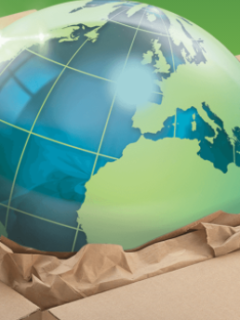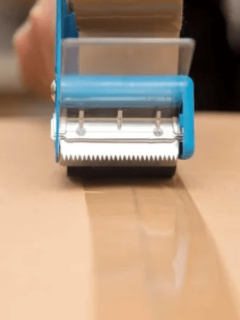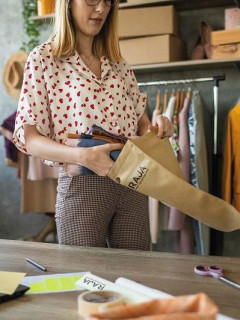Have you heard of mono-material packaging? Mono material means using only one material. The entire packaging product therefore contains only paper or only plastic. Both paper and plastic have their uses, but the advantage is that it is easy to sort the packaging after use. This is good for the environment, but it’s also good for the customer experience. Easy waste sorting contributes to more satisfied customers. Are you ready to choose mono?
1. What is mono-material packaging?
Mono material packaging is a collective term for packaging that has a completely homogeneous composition. “Mono” is a Greek word meaning “one”, and that’s what it’s all about. Mono-material packaging can be made entirely of paper, plastic, aluminium or other materials… as long as no third-party raw materials are mixed in.
Thanks to their homogenous composition, they play a major role in the circular economy. When a product contains only one raw material, it is much easier to sort and process for recycling. This makes life easier and more sustainable.
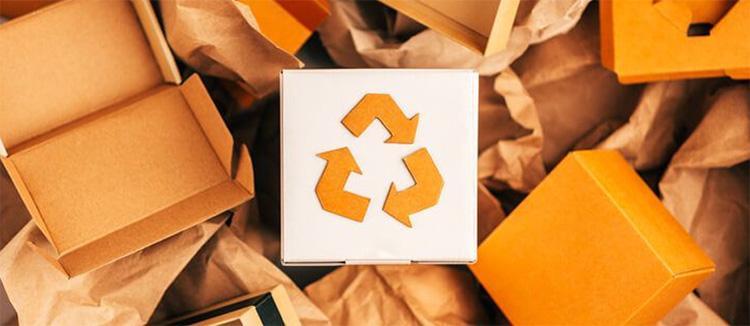
Online shopping has become part of our everyday lives, and this requires that the packaging used in online shopping is sustainable. That is why RAJA consciously focuses on offering packaging solutions that are as good environmental choices as possible and that contribute to a circular economy.
See RAJA’s range of environmentally friendly packaging products here.
2. What are the benefits of mono-material packaging?
The environmental aspect is becoming increasingly important for customers when shopping online. The online stores that operate in the most environmentally friendly way have a competitive advantage in the battle for customers. Packaging is an important part of this.
Mono material is an important measure that helps to reduce environmental impact and gives customers a positive unboxing experience. Packaging in only one material also means that the online store is prepared for the new packaging regulations expected in 2024. Find out more below.
2.1 Reduced environmental impact
After use, mono-material packaging can easily be sorted into the same waste stream, facilitating the recycling process. This means that much less waste is lost and, in the long term, the need for new raw materials will be reduced. This process is known as the circular economy. By choosing mono-materials, you give raw materials a longer life cycle.
This type of packaging also contributes to the reduction of CO2 emissions. When we commit to circularity, we need less raw materials and less transport – both of which are activities that involve CO2 emissions.
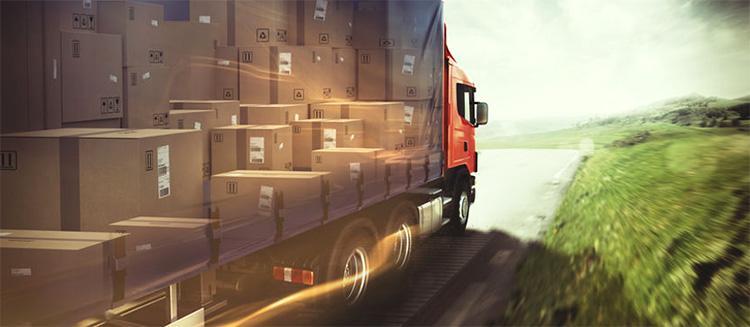
2.2 Improved customer experience
A 2021 European consumer survey on packaging (conducted by Pro Carton) gave some interesting answers about eco-friendly packaging. Even in 2023, we can say that these figures are still relevant. So the message is: choose eco-friendly packaging for your customers!
- Over 58% of respondents recycle more than before and use less plastic packaging.
- 61% of participants consider environmental impact as an important factor in their purchases.
- 93% appreciate supermarkets or retailers that take green initiatives more.
- 65% of respondents have switched brands because they had doubts about the packaging method.
Wouldn’t it be convenient for your customers to be able to sort the entire package at once, without having to divide the packaging into different materials? This saves a lot of frustration when it’s time to throw the packaging away. You achieve this with mono-material packaging.
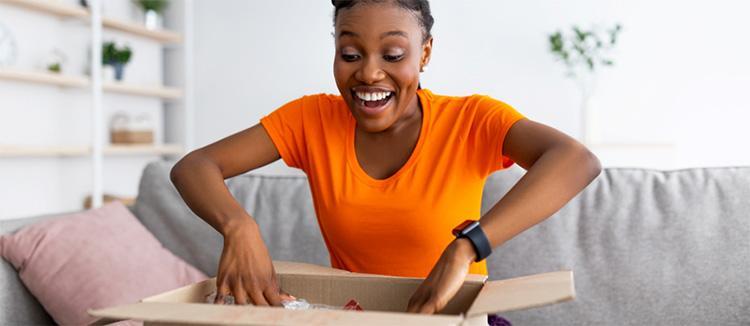
2.3 Ready for new European packaging rules
Towards the end of 2022, the EU launched a new legislative proposal on product packaging: The Packaging and Packaging Waste Regulation (PPWR). This regulation contains rules that apply specifically to packaging used in e-commerce. It is expected that the new regulations will come into force in 2024, and the rules will also apply to Norwegian online stores. Naturally, this will have a significant impact on online retailers’ use of packaging.
To summarise, the EU wants to make all (e-commerce) packaging as circular as possible by 2030. The emphasis is on recycling and reuse. Today’s packaging must be easy to transform into tomorrow’s packaging. By choosing mono-material packaging, online retailers will be ready for this challenge.
Click here to read more about the new European packaging rules
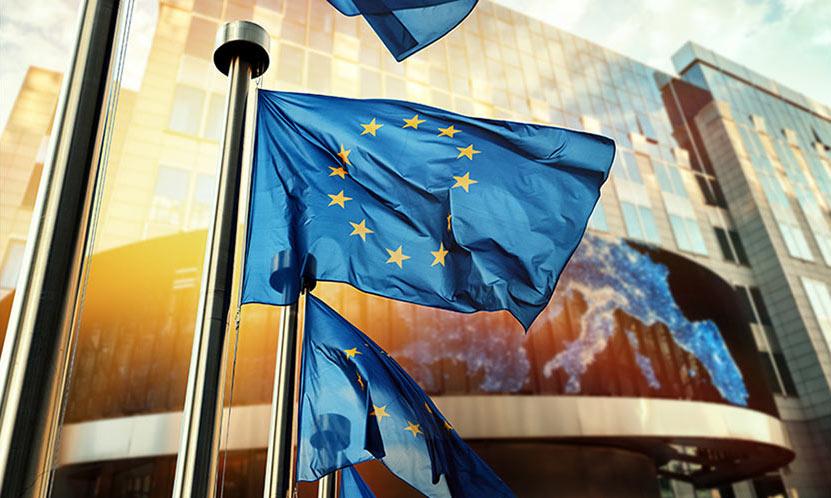
3. Which mono-material packaging is most popular in e-commerce?
There are mono-material options throughout the packaging process, from the box you pack the product in to the pallet the carrier picks up from your warehouse. Single-material packaging comes in many different shapes and forms, and the range is constantly expanding. Online retailers should familiarise themselves with the options available so they can choose the solutions that suit them best.
Feel free to contact RAJA’s customer centre if you need advice and guidance for your online store – you can reach us on 22 51 40 00 or post@rajapack.no.
3.1 Paper or plastic?
Both materials are widely used in the shipping of e-commerce products, but the trend now is that paper packaging is seen as a better choice. There are three reasons for this:
- Studies show that consumers see paper as a greener and therefore more attractive alternative to plastic.
- Paper and cardboard come from a renewable resource: wood. Trees can be grown and reproduced indefinitely (and very quickly). On the other hand, the oil that plastic is made from takes thousands of years to produce.
- Wood, paper and cardboard are raw materials that are already very well sorted today. In most European countries, they are the best-sorted waste materials. Plastic, on the other hand, is not sorted as well or as often (partly because there are so many varieties). In other words, consumers already have a lot of experience in sorting paper correctly from plastic.
3.2 6 steps to mono-material packaging from RAJA
In RAJA’s product range, you will find both paper and plastic products for mono-material packaging. In the example below, we mainly focus on paper solutions.
- Step 1 – Packaging: The first step in the packing process is to wrap the product in a cardboard box or a paper e-commerce bag. There are also convenient boxes with variable heights. This allows you to always pack compactly, because you can easily customise the box to the size of your product.
- Step 2 – Protect: Are you sending products that are fragile or could be damaged in transit? Choose paper bubble wrap, an excellent alternative to traditional bubble wrap.
- Step 3 – Fill: if there is empty space in your box, fill it with kraft paper or choose paper strips for parcel fillers.

- Step 4 – Seal: to close a box, we recommend using paper tape.
- Step 5 – Labelling: Good labelling is important, and if you’re attaching a packing slip, you can attach a paper packing slip pocket to the outside of the box. This is ideal for storing your shipping documents.
- Step 6 – Transport: When shipping large quantities or large products, you often need pallets. Even then, you can choose paper or cardboard solutions: both pallets, stretch film and strapping tape are now available in paper versions.

4. Is mono material always the best solution?
For standard e-commerce shipments, mono material is often the best solution. But there are also a few exceptions to this rule. In some cases, it is practical to use composite packaging. This involves combining 2 or more materials so that the properties of each material contribute to the security of the shipment. Here are some examples:
- Cardboard boxes with integrated foam inserts: to absorb shocks when transporting particularly fragile products.
- Cardboardboxes with integrated plastic film: to protect products from shocks and vibrations during transport.
- Milk cartons have a layer of plastic in the cardboard base so that the milk and the cardboard do not damage each other.
In general, single-material packaging is an interesting solution for online stores, as it significantly reduces the environmental impact. For specialised or very fragile products, specific composite packaging is a better option. Of course, the goal is always that the customer receives the product in perfect condition.
Want to know more about this topic? See also our previous blog article Mono material – this year’s big packaging trend.











